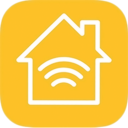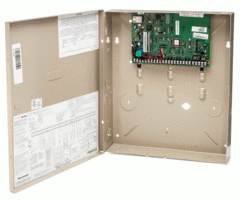Achieve a Hybrid Security System w/ the Qolsys IQ Hardwire 16-F
Posted By Michael GorisDo you want to achieve a hybrid security system that uses both wireless and hardwired wired sensors? We have the perfect solution for you in the Qolsys IQ Panel 2 Plus and the Qolsys IQ Hardwire 16-F. This will let you use both wired sensors and wireless sensors with one convenient system!

Although we are well into the age of wireless security systems, there is still a place for hardwired sensors. Many people install wired sensors for new construction as a way of fully integrating their security system with their home or office. This is a great way to increase property value, and it's a fairly simple task for a builder to accomplish.
In addition, hardwired sensors require less maintenance than wireless sensors. They do not need any battery replacements, and many do not draw any electricity from a panel or wired to wireless converter module. Also, more and more alarm system manufacturers are offering ways to integrate hardwired sensors in with wireless panels. Using wired and wireless sensors together on the same system is sometimes referred to as a "hybrid security system".
The advantage to using a hybrid alarm system with both wired and wireless sensors is that you can still integrate your wired sensors in with the building, while also being able to easily add wireless sensors when convenient. It can be challenging to run wire for hardwired sensors after a building has been constructed. If you need to add some quick new sensors, then wireless ones make for a great selection. They are super easy to install, and they are just as reliable as wired sensors. Also, there are many sensors out there that are only available in wireless varieties.
The 319.5 MHz IQ Panel 2 Plus is a great option for those looking to set up a hybrid security system, as it readily supports DSC PowerG Security Sensors and has a great wired to wireless converter option in the Qolsys IQ Hardwire 16-F. If you aren't familiar with PowerG Sensors, they offer some of the best range in the industry, as they can be used from up to 2,000 feet away from the IQ Panel 2 Plus. The PowerG Sensors are also extremely secure, since they utilize 128-bit AES encryption and Frequency Hopping Spread Spectrum (FHSS) Technology. These are some of the best wireless sensors that you can possibly use with a security system.
But how do you integrate wired sensors in with your new Qolsys IQ Panel 2 Plus System? That's where the Qolsys IQ Hardwire 16-F comes in. This is a wired to wireless converter module that is specifically designed for use with 319.5 MHz security systems. Hardwired sensors connect directly with the Qolsys IQ Hardwire 16-F, and the module sends out a wireless 319.5 MHz signal to the panel on their behalf. This will allow the connected wired sensors to interface with a wireless alarm system that otherwise wouldn't accept them.
There are two (2) versions of the Qolsys IQ Hardwire 16-F. There is a Qolsys IQ Hardwire 16-F w/ Small Enclosure and a Qolsys IQ Hardwire 16-F w/ Large Enclosure. The difference between these two is that the large enclosure module will come with a large plastic cabinet designed for housing multiple IQ Hardwire 16-F units in one convenient location. If you are only bringing over a few hardwired sensors and only need one converter unit, the the small enclosure will often suffice. But if you are using multiple converter modules, then you may want to house them in an enclosure.
Note that every IQ Hardwire 16-F supports up to 16 hardwired zones, including one zone for 2-wire smoke detectors. Also note that each large enclosure from Qolsys is designed to support up to two (2) sets of IQ Hardwire 16-F Converters. Backup batteries are not included, but they are highly recommended. These two sets of batteries will also fit in the large enclosure with the converters.
Both the 319.5 MHz IQ Panel 2 Plus and both versions of the IQ Hardwire 16-F are available for purchase on our website. Please make sure you are using the 319.5 MHz IQ Panel 2 Plus, as the IQ Hardwire 16-F will not work with the other versions. However, the IQ Hardwire 16-F can work with the original non-Plus Qolsys IQ Panel 2. And if you have a 345 MHz IQ Panel 2 Plus, then you can achieve similar results with the Honeywell 5800C2W. Before you know it, you will have an effective and reliable hybrid alarm system!
If you have any questions about using the Qolsys IQ Panel 2 Plus with a Qolsys IQ Hardwire 16-F, or if you want to learn more about hybrid security systems in general, please email us at support@alarmgrid.com. Our support team is available from 9am to 8pm ET M-F. We look forward to hearing from you!




 There are many considerations you will want to make if you are just getting into the market for the first time. You should start by thinking about which
There are many considerations you will want to make if you are just getting into the market for the first time. You should start by thinking about which 



 Alarm wiring is needed to complete the connection between the panel and its plug-in power transformer. Traditionally, users had to strip and prepare their own cabling, which made the process more tedious and difficult. But with prepared cabling like the Honeywell LT-Cable, the process is made much easier, and it really will work with nearly any
Alarm wiring is needed to complete the connection between the panel and its plug-in power transformer. Traditionally, users had to strip and prepare their own cabling, which made the process more tedious and difficult. But with prepared cabling like the Honeywell LT-Cable, the process is made much easier, and it really will work with nearly any